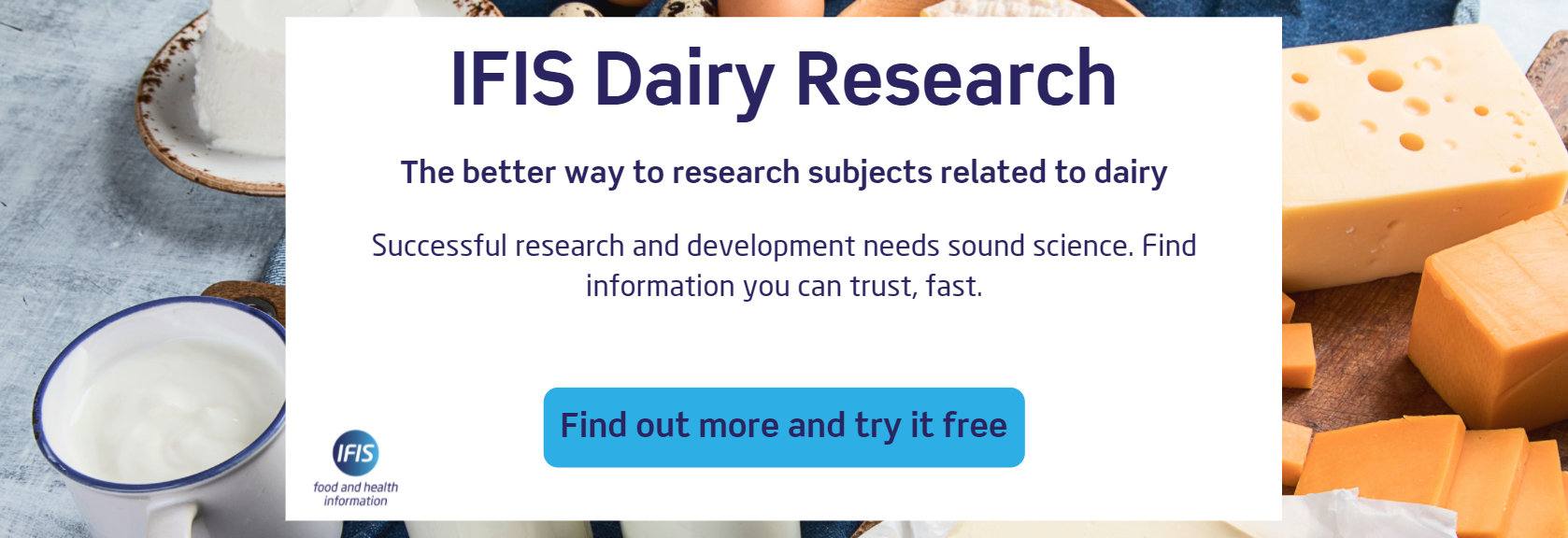The importance of dairy consumption in reducing the occurrence of health conditions like obesity, metabolic syndrome and heart disease is central to research initiatives pioneered by the US Dairy Research Institute®.
In light of some staggering health statistics – approximately one third of Americans are considered obese, heart disease continues to be the leading cause of death among men and women nationwide and nearly 26 million Americans have diabetes – significant nutrition research findings in 2011 supported the role of dairy in helping reduce the risk for several chronic diseases.
The Dairy Research Institute focuses on dairy nutrition and product research, which it hopes will advance the health of Americans. In addition the organisation is constantly exploring ways to deliver dairy products to consumers that are produced responsibly and in an environmentally friendly way.
As cited by the Dairy Research Institute, the top dairy nutrition and product research insights from 2011 include the following:
Metabolic syndrome and diabetes
Dairy consumption was associated with lower incidence of metabolic syndrome, a condition which increases the risk of cardiovascular disease, and type 2 diabetes.
- According to an article by Rice et al published in Advances in Nutrition, key dairy nutrients including calcium, magnesium and potassium may help regulate one or more elements of metabolic syndrome, including, blood pressure, fasting glucose levels, i.e. before the first meal of the day, and body composition.
- A 14% reduction in type 2 diabetes risk among the population with the highest consumption of dairy products, when compared with a population segment with the lowest intakes, was found in a systematic review published in the European Journal of Clinical Nutrition and meta-analysis of seven prospective studies. Increasing dairy intake by just one serving per day was associated with a 6% reduced risk for type 2 diabetes.
- According to the Data from the Epidemiological Study on the Insulin Resistance Syndrome (DESIR study) the consumption of dairy products, other than cheese, and the calcium density of the diet were associated with reduced incidence of type 2 diabetes and impaired fasting glucose.
Cardiovascular disease
As reported in the 2010 Dietary Guidelines for Americans, moderate evidence indicates that intake of milk and milk products is associated with a reduced risk of cardiovascular disease and type 2 diabetes.
- The calcium present in dairy may play a role in reducing fat absorption and may help maintain good cholesterol while minimising any increase in bad cholesterol.
- A systematic review and meta-analysis found that dairy food consumption was associated with a reduced risk of elevated blood pressure.
Chocolate milk and exercise recovery
Drinking chocolate milk after a workout was found to boost improvements in aerobic fitness and body composition and benefit muscle recovery and subsequent exercise performance.
- Researchers from the University of Texas-Austin followed 32, healthy, untrained participants in a 4½ week aerobic training program. They found drinking chocolate milk immediately and one hour following exercise improved body composition, measured by the combination of increased lean muscle and decreased body fat, when compared to those drinking a carbohydrate drink. It also stimulated greater improvements in aerobic fitness compared to those drinking either a carbohydrate beverage or water after the workouts.
Quality and performance improvements for whey protein
Significant advances were made to improve the quality and performance of whey protein, allowing for expanded use in food and drink products.
- The impact of improved whey flavour can be seen in the recent launches of new drinks, smoothies and bars formulated with higher protein concentrations. For example, due to improved heat stability, meal replacement beverages can now be formulated with 10% protein, compared to previous formulas with 5%.
Developing and expanding uses for dairy co-products
Product research has explored and uncovered new uses for dairy co-products to provide ingredient solutions for the food and drink industry to help address consumer demand.
- For example, research refined the development and use of whey permeates, also known as whey solids, as a salt replacement option to help the food and drink industries meet the sodium reduction challenge. This research has converted what was a dairy processing by-product into a growth opportunity for the dairy industry, also helping many formulators eliminate or reduce the amount of salt in their products while maintaining consumer flavour expectations.
The top advances in the area of sustainability include:
- The Cow of the Future Research Priorities white paper released in 2011 identified focus areas for reducing enteric methane emissions through improvements in dairy cow nutrition, genetics and animal health. Enteric emissions are a significant contributor to the industry’s carbon footprint and innovations in this area will help the industry achieve its voluntary goal to reduce the carbon footprint of fluid milk by 25% by 2020.
- A partnership was established with Idaho’s Center for Advanced Energy Studies (CAES) to develop a national research program to advance the science and best management practices of renewable energy and life cycle analysis of dairy systems and processes.
- Looking into 2012, nutrition research will continue to concentrate on dairy as a part of wellness solutions. In line with the 2010 Dietary Guidelines for Americans recommendation to include low-fat and fat-free milk and milk products as part of a healthy diet, the Dairy Research Institute will continue to focus on areas of research uncovering valuable nutrition insights for the dairy, food and drink industries, specifically focused on metabolic health.
‘We’ve learned that people who are better dairy consumers tend to have lower weight, lower body fat, and lower rates of heart disease', said Gregory Miller, Ph.D., president of the Dairy Research Institute. 'In 2012, we will continue to focus on areas of metabolic health. The Centers for Disease Control has sounded the alarm that type 2 diabetes is on its way to becoming the next big health care epidemic that will break the health care bank. Our research is beginning to show that dairy is not part of the problem, but may be part of the solution to the diabetes epidemic and we will continue to explore dairy’s role in lowering the risk for this disease.’
(Image Credit: Anita Jankovic via Unsplash)


